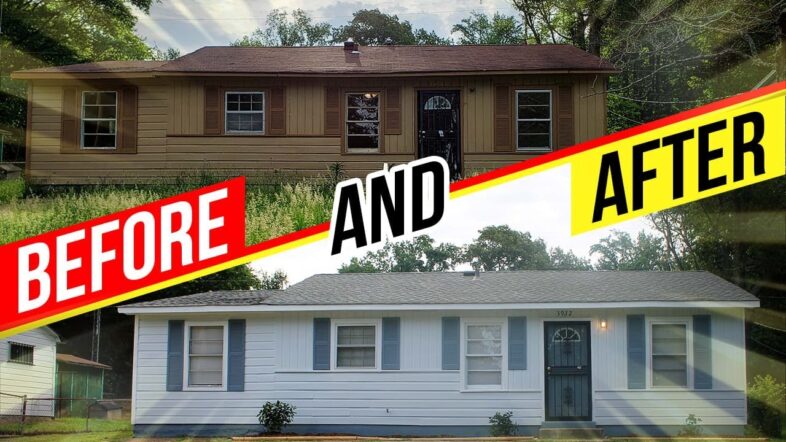Report: Types of Rehabs & The Investor’s Strategy
Website: www.REISkills.com
Topic: Aligning Your Rehabilitation Strategy with Your Investment Exit Plan
Introduction
Before estimating repair costs, you must first define your exit strategy. What you plan to do with a property—wholesaling, retailing, or holding as a rental—directly impacts the quality, extent, and budget of the rehabilitation. This report outlines the three primary rehab philosophies to guide your repair estimates and maximize your profitability.
1. The Wholesaling Rehab (The “Quick Fix” or “Assignable” Rehab)
Objective: Flip the property in its “as-is” condition to another investor with minimal to no financial investment in repairs.
Key Principles:
-
No Major Repairs: The end-buyer investor is responsible for all renovations. Your goal is to avoid tying up capital in repairs.
-
Strategic Estimation: Even though you aren’t doing the work, you must accurately estimate the repair costs for the end-buyer to determine your own purchase and assignment price.
-
Speculate on the Exit: Consider what the next investor will likely do (retail vs. rental) as this affects their rehab budget and what they are willing to pay you.
When to Consider “Quick Fixes”:
Sometimes, minimal, low-cost repairs can significantly increase the property’s appeal and your final assignment fee. The rule of thumb: no more than one day’s work for two people.
Recommended Quick Fixes:
-
Curb Appeal: Cut overgrown grass, basic yard cleanup.
-
Cosmetic Exterior: Remove boards from windows, replace broken glass.
-
Interior Cleanout: Remove trash from inside the house.
-
Critical Patches: Patch a leaking roof or a hole in the ceiling to prevent further damage and make the property more presentable.
2. The Retailing Rehab (The “Retail Flip” or “Move-In Ready” Rehab)
Objective: Sell the renovated property to a retail homebuyer seeking a turnkey residence.
Key Principles:
-
Quality & Aesthetics: The focus is on making the property look top-notch. Use modern, attractive finishes to appeal to a buyer’s emotions.
-
Neighborhood Alignment: The rehab quality must match the class-level of the neighborhood. An upscale area demands high-end fixtures (e.g., granite, stainless steel), while a moderate-income area requires good-quality, cost-effective materials.
-
Market-Driven Finishes: Expect to install nice light fixtures, updated door handles, attractive carpet, and complete landscaping (e.g., re-sodding, planting flowers).
3. The Rental Property Rehab (The “Durable & Functional” Rehab)
Objective: Prepare the property for a tenant, balancing attractiveness with long-term durability and low maintenance.
Key Principles:
-
Durability Over Luxury: Prioritize materials that can withstand wear and tear. This reduces future maintenance costs and tenant turnover expenses.
-
Functionality & Class-Appropriate: Fixtures should be functional and match the neighborhood’s class level. Avoid expensive finishes in lower-income rentals where they may be a poor ROI.
-
Easy Maintenance: Choose materials that are easy to clean and repair.
-
Examples: Use semi-gloss or satin paint (easy to wipe clean), commercial-grade linoleum, and durable, stain-resistant carpet.
-
Conclusion: Strategy is Everything
A successful real estate investment starts with a clear exit strategy. By understanding the fundamental differences between a wholesaling, retailing, and rental rehab, you can accurately budget for repairs, allocate resources effectively, and ensure your renovation efforts directly support your financial goals.
Form: Repair Estimate Worksheet
Instructions: Use this digital worksheet to systematically estimate repair costs based on your chosen rehab strategy. The “Rehab Strategy” field will help you stay focused on the appropriate level of quality and expense.
Property Address: __________________________________________
Date: _________________________
Rehab Strategy: [ ] Wholesale (Quick Fix) | [ ] Retail (Move-In Ready) | [ ] Rental (Durable)
| Category | Item | Notes & Specifications (Tailor to your Rehab Strategy) | Estimated Cost |
|---|---|---|---|
| EXTERIOR | Foundation | $ | |
| Roof | (Patch vs. Full Replacement) | $ | |
| Eaves / Soffits | $ | ||
| Windows | $ | ||
| Front Door | $ | ||
| Exterior Paint | $ | ||
| Driveway / Walkway | $ | ||
| Landscaping | (Cleanup vs. Re-sod/Planting) | $ | |
| Other: ________________ | $ | ||
| INTERIOR | Carpet / Flooring | (Grade/Type: _______________ ) | $ |
| Interior Paint | (Finish: Flat vs. Semi-Gloss) | $ | |
| Light Fixtures / Ceiling Fans | $ | ||
| Interior Doors | $ | ||
| Door Hardware | $ | ||
| Other: ________________ | $ | ||
| KITCHEN | Countertops | (Material: _______________ ) | $ |
| Cabinets | (Paint, Refinish, Replace) | $ | |
| Appliances | $ | ||
| Flooring | $ | ||
| Lighting | $ | ||
| Sink & Faucet | $ | ||
| Other: ________________ | $ | ||
| BATHROOM(S) | Tub / Shower | (Reglaze, Tile, Surround) | $ |
| Tile | $ | ||
| Toilet | $ | ||
| Vanity & Sink | $ | ||
| Mirror / Medicine Cabinet | $ | ||
| Lighting & Ventilation | $ | ||
| Other: ________________ | $ | ||
| SYSTEMS | Plumbing | $ | |
| Electrical | $ | ||
| HVAC (Heating & AC) | $ | ||
| Water Heater | $ | ||
| Other: ________________ | $ | ||
| OTHER COSTS | Permits & Fees | $ | |
| Labor / Contractor Costs | $ | ||
| Contingency (10-20%) | $ | ||
| Other: ________________ | $ | ||
| GRAND TOTAL: | $ |
www.REISkills.com – Empowering Investors with Knowledge.



